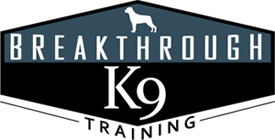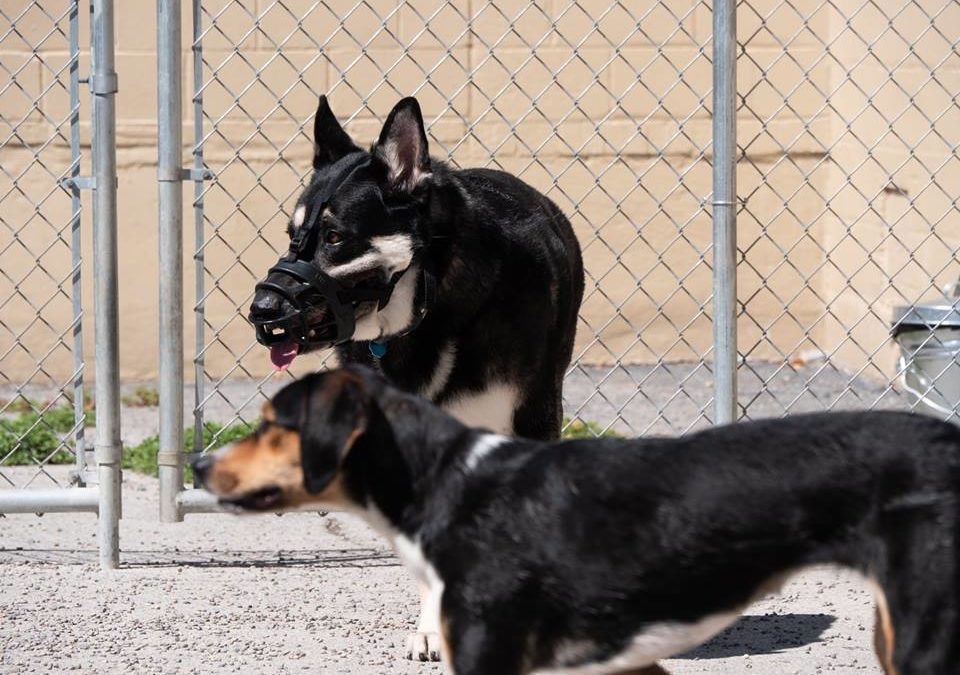It may help you to know two things from the get-go: Your dog is not the only aggressive one on four legs. As badly as he may behave and as embarrassed as he may make you feel, plenty of dog owners share your predicament.
This knowledge may provide some temporary relief, but there’s something else that can bring about the long-term change that will restore real peace to your life: The understanding that aggression is treatable with behavioral modification – and the experts at Breakthrough K9 Training are uniquely qualified to provide it.
You Know the Signs of Aggression
Like many pet owners, you probably see good qualities in your pet – beyond aggression. In fact, you may be the only one who sees these qualities. So, you’ve probably been struggling to deal with your dog’s aggression on your own for some time.
Understanding some common signs of aggression and the most common causes of dog aggression are the first steps you can take in successful rehabilitation.
Your dog may exhibit one or more of these aggressive signs:
- Baring teeth
- Biting, ranging from snipping to puncturing
- Growling
- Lashing out when placed on a leash
- Pinning ears back
- Snarling
- Stiffening the back
Triggers Flip a Dog’s Aggressive “Switch”
Dogs rarely act out for no reason. Like people, they usually respond to some sort of trigger or stressor. With dogs, the triggers can be:
- A need to establish dominance
- Fear
- Pain or illness
- Protection of his possessions or territory (resource guarding)
You May Recognize the Most Common Types of Dog Aggression
These triggers manifest themselves in various types of aggression. The six most common forms include:
- Fear aggression, which, unlike other types of aggression, is rarely preceded by any warning signs. This is because the behavior is often connected to a trauma in the dog’s past. Similar to people, dogs face a flight or fight response – and many choose to “fight” by being aggressive.
- Frustration aggression, which surfaces when a dog is forced to do something he doesn’t like, such as being pulled back by the collar or forced into a cage.
- Leash aggression, or when a dog begins barking, biting or lunging as soon as he is put on a leash. This can be a particularly frustrating type of aggression, especially if the dog is calm immediately before seeing the leash. Clearly, this dog does not like being restrained. But it also is often the easiest type of aggression to correct.
- Pain-triggered aggression, which is easiest to diagnose if it comes out of the blue. Illness, discomfort or pain supply a justification for why a normally good-natured dog would act out.
- Resource Guarding, which centers on a dog’s fixation on his food, toys or favorite resting place. In the same way, territorial dogs can act out if intruders invade their turf. They can be possessive about their territory.
- Social aggression, which is most prevalent in households with multiple dogs but sometimes multiple cats or other pets. Animals seem to work out boundaries on their own, but a dominant dog will remind others in the pack who’s the boss.
You Can Count on Breakthrough K9 Training
As your gut instinct has probably told you, aggression of any type is a serious problem. As much as you may hope against hope, you know it’s one your dog will not “grow out of” on his own. We know you love your dog. And we both know you need professional help that combines the very best in skill and compassion – the kind you’ll find at Breakthrough K9 Training.
Read more about our Board & Train Program for Aggressive Dogs.

